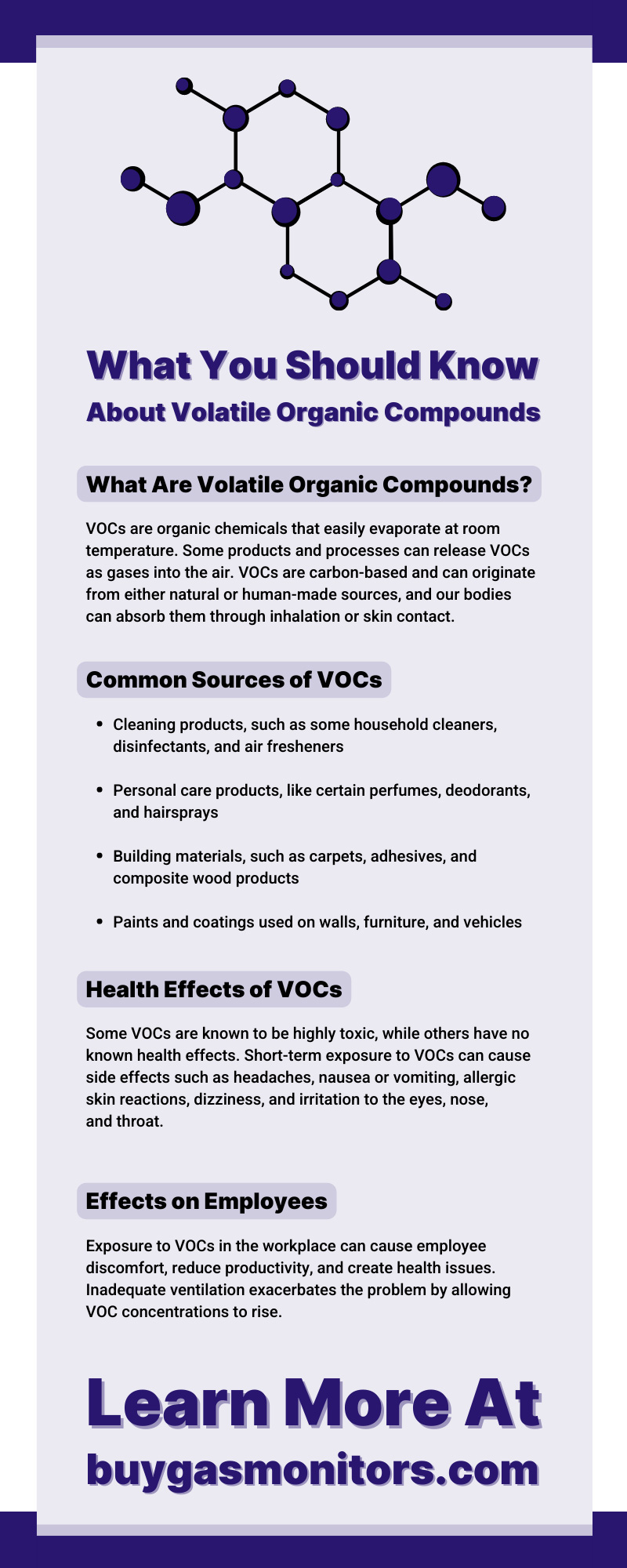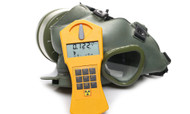What You Should Know About Volatile Organic Compounds
Posted by William Kimmell on 29th Jun 2023
Volatile organic compounds (VOCs) play a significant role in the work of many industries. For businesses, understanding VOCs is crucial for following regulatory compliance, ensuring employee safety, and following sustainable practices. Discover what you should know about volatile organic compounds in industrial and business settings.
What Are Volatile Organic Compounds?
VOCs are organic chemicals that easily evaporate at room temperature. Some products and processes can release VOCs as gases into the air.
VOCs are carbon-based and can originate from either natural or human-made sources, and our bodies can absorb them through inhalation or skin contact.
Common Sources of VOCs
VOCs have numerous industrial applications, which is why they are in a wide range of products we encounter daily. Some of the most common sources of VOCs include the following:
- Cleaning products, such as some household cleaners, disinfectants, and air fresheners
- Personal care products, like certain perfumes, deodorants, and hairsprays
- Building materials, such as carpets, adhesives, and composite wood products
- Paints and coatings used on walls, furniture, and vehicles
VOC sources can be slightly different for businesses but even more widespread. For example, many manufacturing processes involve the use of VOCs. VOCs are found in printing and graphic arts, chemical production, and metal finishing.
VOCs provide a variety of benefits in manufacturing. They are used in cleaning products because they can dissolve or dilute other ingredients. Yet, in paints and coatings, they enhance application and drying properties. Despite these advantages, it’s important to properly handle VOCs and reduce their potential health and environmental impacts.
Health Effects of VOCs
Some VOCs are known to be highly toxic, while others have no known health effects. Short-term exposure to VOCs can cause side effects such as headaches, nausea or vomiting, allergic skin reactions, dizziness, and irritation to the eyes, nose, and throat.
Exposure to high levels of VOCs may cause an increased risk of cancer, respiratory issues, developmental and reproductive disorders, and damage to the liver, kidneys, or central nervous system. Children, older adults, and individuals with pre-existing respiratory conditions—such as asthma—are particularly vulnerable to the effects of VOC exposure.
Effects on Employees
Exposure to VOCs in the workplace can cause employee discomfort, reduce productivity, and create health issues. Inadequate ventilation exacerbates the problem by allowing VOC concentrations to rise.
VOC Management Strategies for Businesses
Take the following steps to reduce VOCs in your workplace:
Monitor VOC Concentrations
Photoionization detectors are VOC gas detectors that measure volatile organic compounds and other gases in parts per million. Use these gas detectors to monitor conditions and protect workers continuously.
Comply With Regulations
Stay informed about local, state, and federal regulations concerning VOC emissions. Nearly every industry has its own standards for VOC safety, so be sure to comply with your industry’s relevant standards and guidelines.
Substitute High-VOC Products
Reduce or eliminate VOC emissions by substituting high-VOC products with low-VOC or VOC-free alternatives. When purchasing products, look for those labeled as low-VOC or VOC-free. Greenguard and Scientific Certification Systems (SCS) are two third-party organizations that certify low and no-emission products.
Optimize Processes
Optimize operational processes to minimize VOC emissions. Use efficient equipment, technology, and work practices that reduce VOC creation and waste.
Manage Waste
Reuse VOC products when possible. If that is not possible, dispose of them safely using your hazardous waste management guidelines.
Let New Products Off-Gas Outdoors
Off-gassing is the process wherein newly manufactured products release chemicals in gas form. You can decrease VOCs by letting new products off-gas outdoors. Exposure to heat will increase the rate of off-gassing, so letting the product sit in the sun will speed up the process.
Store VOC-Containing Products Properly
Keep all chemical products tightly sealed. Store products away from work areas when possible.
Improve Ventilation
Improve ventilation systems to enhance air exchange and dilute indoor concentrations. Clean and maintain ventilation systems to ensure their performance, and consider using activated-carbon air filters to remove VOCs.
Train Employees
Educate employees about VOCs, their health risks, and proper handling procedures. Promote safe practices, including wearing personal protective equipment (PPE) as needed.
How Gas Detectors Help Control VOCs
Photoionization detectors detect the presence of VOCs, provide early warning signs of potential exposure, and empower businesses to act and minimize risk. Here are a few ways gas detectors help in controlling VOCs.
Provide Early Detection
Gas detectors continuously monitor VOCs and can detect them at very low concentrations. The monitors can alert workers to the presence of VOCs before they reach harmful levels. This early detection prevents prolonged exposure.
Enhance Worksite Safety
Gas detectors provide essential protection in industrial settings where VOCs are commonly present, such as at manufacturing facilities or in laboratories. While some VOCs emit a strong smell, not all do. Use photoionization detectors to help keep the workplace safe.
Monitor Processes
Use a gas detector to monitor emissions during industrial processes. Data from the detector will help you assess the efficiency of your processes and identify opportunities for improvement. Implement controls for VOC emissions to improve environmental performance and regulatory compliance.
Protect the Environment
Controlling VOC emissions and concentrations is good for the environment, too. By detecting leaks, spills, or indicating improper storage of VOC-containing items, detectors can help prevent the release of harmful gases into the environment.
Protect Your Business With Detectors From TG Technical Services
The sources of VOC emissions, potential health risks, and strategies for managing VOCs are just some of the things you should know about volatile organic compounds. Understanding this information makes it possible for businesses to create healthier workplaces and meet regulatory requirements.
Some VOCs cause known health problems, such as respiratory issues, while others are not known to cause any adverse health conditions; either way, limiting VOC exposure is an important safety measure.
While it’s often impossible to eliminate the presence of VOCs, controlling their concentrations protects everyone’s health. Protect your business and employees from the dangers of VOCs with comprehensive VOC management processes.
Using a photoionization sensor from TG Technical Services is one of the easiest and most fundamental ways to control VOC concentrations. Our devices have exceptional accuracy and sensitivity in detecting VOCs. Shop with us today for a user-friendly VOC detector to ensure industrial safety and improve indoor air quality.


